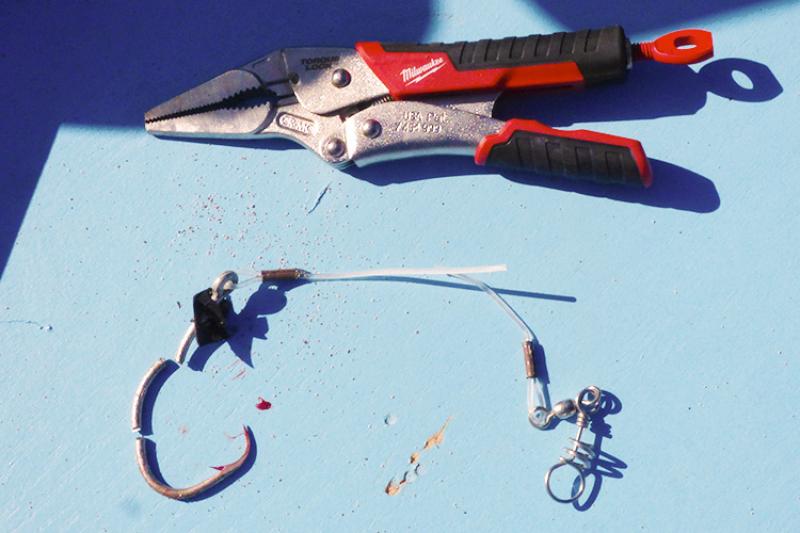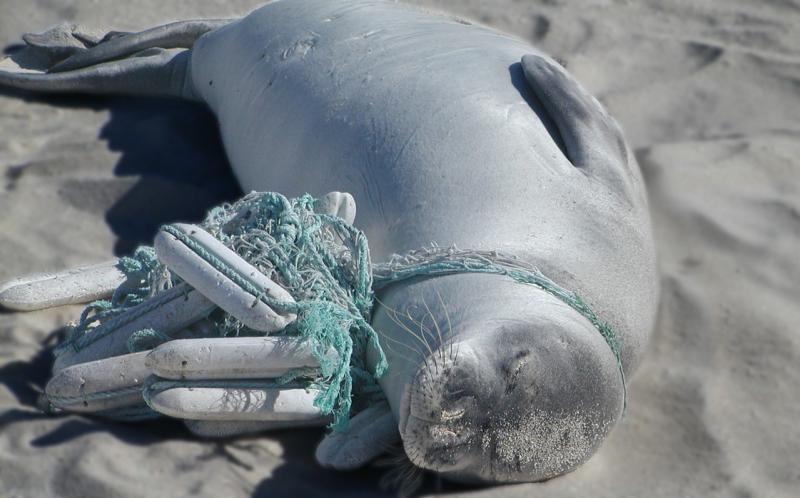Hawaiian monk seals and nearshore fishermen often share the same fishing grounds, and this mutual interest in seafood occasionally results in accidental and potentially life-threatening seal hookings. But thanks to an extensive volunteer network (NOAA’s eyes and ears on the ground) and partners, good samaritans who act quickly to report seal hookings, and a highly trained response team and veterinary staff, we can usually make the best of a bad situation and avoid what could otherwise result in a serious injury or fatal interaction.
We recently shared one such case involving the young seal Kaʻale (RH32), whose frequent interactions with shore-based fishermen near the Kahe Power Plant on the westside of Oʻahu led to multiple hookings and hook ingestions. In early September, we removed a large barbed hook from the seal’s tongue—read about Kaʻale’s story—and we’d now like to shine a spotlight on successful dehookings of two other seals since Kaʻale’s incident.
In the first case, a fisherman accidentally hooked 7-month-old male seal RK88. He reported the incident to NOAA, informing the hotline operator that he cut his line—leaving about 10 feet of line trailing from the hook—as soon as he realized he had hooked a seal. By quickly cutting the line as short as he could, the fisherman helped reduce the chances of the line entangling RK88 or becoming snagged and anchoring the seal to the seafloor, while also reducing the chance that the seal might ingest the line.
The fisherman’s response was exceptional, and not just because of the way he cut the line. He gave us the best chance to successfully save an endangered Hawaiian monk seal by reporting useful information to the hotline operator: He relayed prominent features of the seal (vital for accurate identification), where the seal was hooked on its body, how much line was left, and where he last saw the seal.
About a week after this initial report, RK88 was spotted on a sandy beach at Kaʻena Point. Our NOAA team immediately responded and found him sleeping peacefully. The team captured RK88 and within 10 minutes removed the hook safely and cleanly with no complications. Once released, RK88 flopped back into the water, stopping halfway into the surf to take one last look back at the team that helped him.
The other dehooking involved RH48, a 2-year-old female seal our team had been trying to dehook since she was first spotted with a large fishing hook lodged in her cheek on September 22, 2017. While volunteers and members of the public frequently sighted and reported RH48 to our hotline, the seal was only seen hauled out in rocky areas, which were too hazardous for both the seal and responders to attempt a dehooking effort. Staff and volunteers kept a close watch on her body condition and health, which thankfully remained good, suggesting the hook was non-life threatening.







